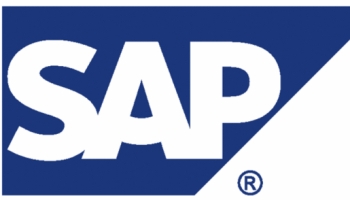SAP Sends Second Wave Into Collaboration Market

Though Google Wave failed, SAP hopes StreamWork will successfully carry real-time collaboration into the enterprise
SAP is trying to do something interesting and challenging, facilitating its real-time collaboration play in the wake of Google Wave’s disastrous crash.
The business software maker has taken its StreamWork application up a few notches, delivering it to enterprises both in the cloud and via an on-premise solution; putting it in the Google Apps Marketplace; and providing a StreamWork mobile app accessible via RIM’s Blackberry smartphones.
Virtual Business Chat Room
StreamWork provides a Web-based meeting room where between five and 30 corporate workers can huddle virtually to talk shop, communicating via instant messaging and sharing documents, presentations and spreadsheets. Users can analyse data from enterprise applications, such as a pipeline analysis in a business intelligence tool or purchase order approvals in an ERP system, and discuss the app using chat tools.
StreamWork launched last March when the real-time collaboration craze was at its peak, thanks to Google Wave and Novell’s Pulse platform. But Wave has since been shuttled off to Apache, and Novell’s acquisition has thrown Pulse, renamed Vibe, in doubt.
David Meyer, the SAP senior vice president charged with overseeing StreamWork, remains convinced his application will prevail because it is geared around specific business-use cases. And that is not just because thousands of companies and thousands of business users all over the world are using the platform today, including Siemens.
“These new patterns of the engagement in the workplace scream for context. They scream for being baked into what you do today so you don’t have to go to a new tool that is sometimes confusing,” Meyer argued.
In that vein, StreamWork helps users diagnose problems and find the right people and steps to solve those problems, sometimes with users having to go to StreamWork to do this. Activity streams will, in time, surface in Google Docs and Google Apps, ERP systems and business intelligence applications.
For example, the app already integrates with SAP’s BusinessObjects BI OnDemand, and users will soon be able to trigger StreamWork in SAP’s Customer Relationship Management and Business Objects Strategy Management applications.
Meyer also said his team is adding a social analytics component to help StreamWork users better discover subject-matter experts and recommend relevant content. This follows similar work by collaboration software rivals Jive Software and IBM Lotus Connections.
The SAP StreamWork enterprise edition sports a virtual appliance, based on Novell’s SUSE Linux Enterprise Server and SUSE Appliance Toolkit, to let business users integrate the Web-based StreamWork app with corporate business systems.
The idea is to allow people from different companies incorporate enterprise data directly into their SAP StreamWork activities. The enterprise edition is available globally, starting at $16 (£10) per user, per month.
SAP is also now marketing StreamWork via the Google Apps Marketplace, where more than three million Google Apps businesses find and buy business apps. This allows users to log into StreamWork directly from their Google Apps accounts.
In 2011, Google Apps will be accessible directly from StreamWork, allowing users to access Google’s Docs, Gmail and Calendar in the app.
Meyer also said StreamWork will soon be available as a mobile app for BlackBerry smartphones. Users will be able to create and use SAP StreamWork activities from their mobile application. SAP has a prototype of a mobile app for Apple’s iPhone.
SAP has a free version and the existing professional edition pricing is $9 (£6) per user, per month.
